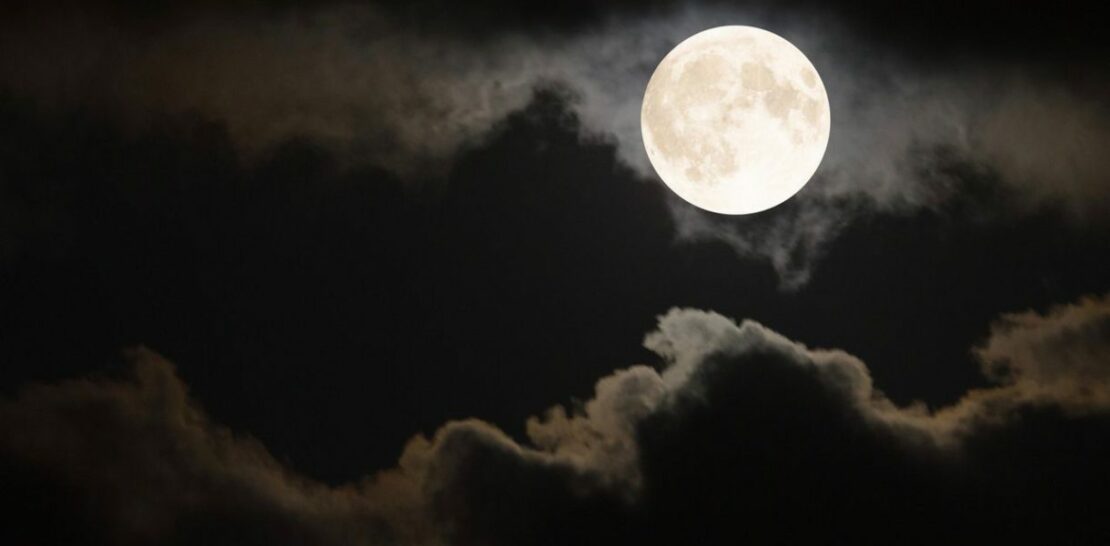Whether you are an avid stargazer, a spiritual enthusiast, or simply someone who appreciates the beauty and mystery of the night sky, the full moon has always held a special place in our imagination.
In this comprehensive guide, we will delve into the full moon calendar of 2023, providing you with detailed information on the dates and times when you can witness this celestial spectacle and plan your activities accordingly.
From exploring the impact of the full moon on various aspects of our lives to understanding the cultural and historical significance behind its phases, this article offers a complete overview of everything you need to know about the full moons of 2023.
Lunar Fundamentals: Understanding the Full Moon Phenomenon
Before diving into the specifics of the 2023 full moon calendar, let us first grasp the fundamental concepts that govern the lunar cycle and the full moon phenomenon.
Lunar Cycle: The moon revolves around the Earth in an elliptical orbit, taking approximately 29.5 days to complete a full cycle. This period, known as the synodic month or the lunar month, consists of several distinct phases that are determined by the relative positions of the Earth, the moon, and the sun.
Phases of the Moon: As the moon orbits the Earth, we observe different portions of its illuminated surface, resulting in the various moon phases. These phases can be categorized into four primary stages: new moon, first quarter, full moon, and third quarter. The full moon occurs when the moon is on the opposite side of the Earth from the sun, with its entire illuminated side facing us.
- New Moon: The moon is positioned between the Earth and the sun, with its dark side facing us. This phase is characterized by the moon’s absence from the night sky.
- First Quarter: The moon has completed one-quarter of its orbit, and we see half of its illuminated side. The first quarter is also known as the “half moon.”
- Full Moon: The Earth is positioned between the moon and the sun, allowing us to see the entire illuminated side of the moon. This phase is marked by the moon’s brightest and most prominent appearance in the night sky.
- Third Quarter: The moon has completed three-quarters of its orbit, and again, we see half of its illuminated side. The third quarter is also referred to as the “half moon.”
Mark Your Calendars: The Full Moon Schedule of 2023
Now that we have a basic understanding of the lunar cycle and the full moon phenomenon, let’s take a closer look at the full moon calendar for 2023, complete with specific dates and times for each occurrence.
- January 6, 2023: The first full moon of the year, also known as the “Wolf Moon,” will grace the night sky on January 6 at 03:08 UTC.
- February 4, 2023: The “Snow Moon” will make its appearance on February 4 at 23:24 UTC, marking the second full moon of the year.
- March 6, 2023: The “Worm Moon” is set to occur on March 6 at 19:42 UTC, signaling the arrival of spring in the Northern Hemisphere.
- April 5, 2023: The “Pink Moon” will be visible on April 5 at 16:23 UTC, named after the pink wildflowers that bloom during this time.
- May 5, 2023: The “Flower Moon” will illuminate the sky on May 5 at 13:33 UTC, symbolizing the abundance of blossoming flowers in spring.
- June 3, 2023: The “Strawberry Moon” will make its appearance on June 3 at 10:41 UTC, coinciding with the harvesting of strawberries in North America.
- July 3, 2023: The “Buck Moon,” named after the new antlers that grow on male deer during this time, will occur on July 3 at 07:37 UTC.
- August 1, 2023: The “Sturgeon Moon” is set to grace the night sky on August 1 at 03:29 UTC, named after the abundant sturgeon fish in North America’s Great Lakes.
- August 30, 2023: A second full moon in August, known as the “Blue Moon,” will occur on August 30 at 22:37 UTC. This phenomenon, where two full moons occur in the same calendar month, is relatively rare, happening once every two to three years.
- September 29, 2023: The “Harvest Moon,” symbolic of the time to gather crops, will illuminate the sky on September 29 at 16:57 UTC.
- October 29, 2023: The “Hunter’s Moon” is set to make its appearance on October 29 at 10:17 UTC, named after the time when hunters would stock up on game for the winter months.
- November 27, 2023: The “Beaver Moon” will be visible on November 27 at 02:46 UTC, marking the time when beavers build their winter dams.
- December 26, 2023: The final full moon of the year, dubbed the “Cold Moon,” will occur on December 26 at 18:15 UTC, signifying the arrival of winter and its chilly temperatures.
Aligning Your Plans with the Lunar Calendar: Full Moon Activities and Rituals
Throughout human history, the full moon has been associated with various cultural, spiritual, and agricultural practices. In this section, we will explore some of the ways in which you can align your plans and activities with the full moon calendar of 2023.
Lunar Gardening: Many gardeners and farmers believe that planting, cultivating, and harvesting crops by the phases of the moon can lead to healthier and more abundant yields. The full moon is considered an ideal time to plant root crops, as well as to harvest fruits and vegetables that grow above ground.
Moonlight Meditation: The full moon is said to have a profound impact on our emotions and intuition, making it a perfect time to engage in meditation and reflection. You can practice moonlit meditation by finding a quiet outdoor space where the moon’s light is visible, and focusing on your breath while absorbing the serene and calming energy of the full moon.
Full Moon Rituals: Spiritual practitioners often perform rituals during the full moon to harness its powerful energy for healing, transformation, and manifestation. These rituals may include activities such as journaling, creating a moon altar, and conducting a release ceremony to let go of negative emotions and beliefs.
- Journaling: Writing down your thoughts, feelings, and intentions during the full moon can promote self-awareness, clarity, and positive change. You can create a full moon journal to record your insights and experiences.
- Moon Altar: Creating a sacred space dedicated to the full moon can enhance your connection to its energy. You can decorate your moon altar with crystals, candles, and symbolic items that represent your intentions and desires.
- Release Ceremony: A release ceremony involves writing down the things you want to let go of—such as negative thoughts, emotions, or habits—on a piece of paper, and then safely burning or burying it during the full moon. This symbolic act is believed to facilitate the release of unwanted energies and promote personal growth.
Full Moon Folklore and Cultural Significance
Beyond its undeniable beauty and captivating presence in the night sky, the full moon has also played a central role in various myths, legends, and cultural traditions throughout history. In this final section, we’ll explore some of the fascinating stories and beliefs surrounding the full moon and its significance in different cultures.
Lunar Deities: In many ancient civilizations, the moon was personified as a goddess or god, representing fertility, wisdom, and the cyclical nature of life. Some of the most well-known lunar deities include Selene (Greek), Artemis (Roman), and Chang’e (Chinese).
Lunar Festivals: The full moon has long served as the focal point for numerous cultural celebrations and religious observances. Examples of these lunar festivals include the Mid-Autumn Festival in China, Vesak in Buddhism, and Purnima in Hinduism.
Lunar Lore and Legends: The full moon has inspired countless myths and legends across the globe, often featuring tales of transformation, mysticism, and supernatural occurrences. Some of the most famous examples include the stories of werewolves, the Moon Rabbit, and the African legend of Mawu and Lisa.
Moon Symbolism: In various cultures and spiritual traditions, the full moon has been associated with a range of symbolic meanings, such as enlightenment, wholeness, and the balance of light and darkness. These beliefs often stem from the moon’s cyclical nature, which mirrors the cycles of life, death, and rebirth.
In conclusion, the full moon calendar of 2023 offers a unique opportunity to connect with the lunar cycle and its profound impact on our lives and the world around us. By understanding the full moon phenomenon, tracking its monthly occurrences, and aligning our plans and activities with its phases, we can not only appreciate the beauty and wonder of this celestial event but also tap into its rich cultural and historical significance. So, as you mark your calendars for the upcoming full moons of 2023, remember to embrace the lunar energy, engage in meaningful rituals, and celebrate the timeless allure of the moonlit night sky.




